French Horns are among the most difficult-to-make musical instruments, with valves, complex tubing and endless options to customize.
Here, we bring together some things to think about when you buy, explore bell/material/size options and give you 10 instruments of all levels from French Horn brands we think are worth considering.
Is the French Horn Easy to Play?
…and are some brands easier than others?
The French Horn has a reputation for being difficult – the notes are closer together than on many other instruments, which makes accuracy hard. But some people find the horn comes easily to them, some people have a slow first year then progress quickly, and many people who take it up as a second instrument find it straightforward.
There are many different French Horn brands. A beginner/intermediate French Horn by a company that focuses on other musical instruments is likely to have some small ‘defects’ in areas that may not matter at a lower level, but become something we need later on. For example, hand-stopping (a technique where you close your hand to make a metallic sound) is often out-of-tune on beginner instruments, but not professional instruments, which also have better high and low ranges.
A professional player might sometimes trade ease of playing for convenience or a better quality of tone. For example, lacquer, gold brass and a detachable bell all make the horn heavier, which can deaden the sound compared to an unlacquered, fixed-bell yellow brass horn. However, gold brass sounds beautifully mellow – a sacrifice you might be willing to make.
Resistance (the thing that makes a sound “crunchy” or feel less free) also differs between makes; Paxman horns are less resistant than Alexanders, as they have a larger bell throat and wider tubing. However, some people love the Alexander sound quality – you get an amazing brassiness in loud playing (a kind of classic hunting horn sound!) and some people find the sound more defined. But the resistance makes it harder! As they say, sometimes you have to suffer for your art…
How to play a French Horn
It’s a rather complicated question, and if you want a more detailed answer, look at this ‘How To Play The French Horn‘ article! However, in a nutshell…
- The French Horn is played with the right hand straight-ish inside the bell, and the index/middle/ring fingers of the left hand on three valves, with the thumb operating a thumb valve on a double horn.
- You buzz your lips together into the mouthpiece (tight for high, loose for low), and blow air through them as they buzz. This creates the sound!
- This is the same on ALL modern French Horns – no matter what brand.
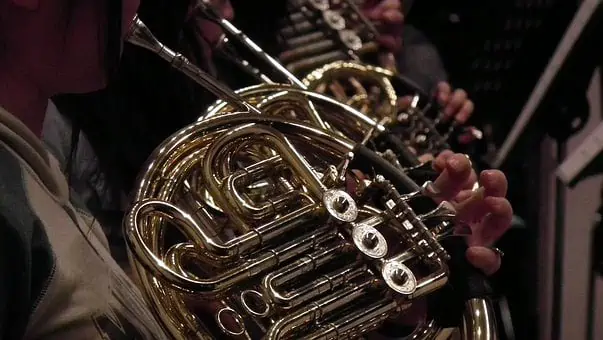
Things to Consider When Buying a Horn
New vs Used
You might assume new instruments are automatically better, but this is only sometimes the case. Second-hand instruments are literally “played in”, and are cheaper. Have a look at this table…
- Pristine condition! No dents, no valve wear, definitely not “played-out”.
- A blank canvas
- Factory-fresh
- Pristine, new instruments cost more, just BECAUSE they are new.
- A good-quality, professional used instrument will have been “played in” - this is a process causing the atoms of metal to align and vibrate in a certain way, producing that ringing quality in a good instrument. Also, an instrument previously played will appear to have many of the notes in the “right places” - this is basically small amounts of dirt (friendly dirt!) built up in the tubes from repeated playing, in a way that gives each note a reliable “notch” that can help with accuracy.
- Some brands are very consistent, but even experienced manufacturers produce occasional instruments that are quirky or have very slightly off tuning.
- If you buy from somebody you trust (and they are honest about the instrument’s weaknesses), it effectively comes “curated” with a guarantee that it’s good. I bought a horn from a member of an orchestra I loved (they were upgrading), and it was a fantastic instrument. Nonetheless, trust your own opinion and be critical about the instruments you try; if you’re unsure, get your teacher to try it out.
* A handy test to see if brass instruments still have life in them – flick the bell gently with your fingers. If it rings, it’s alive (played-in, not all played out!). If it sounds dull (a “dunk.”/“donk.” that ends abruptly and doesn’t resonate), it’s knackered – don’t buy it!
Valve options
Generally, non-standard valve options are non-essential – most people just play double French Horns. You might want something different if you have problems lifting weight, want a stopping valve or want a triple horn. All modern horns have rotary valves (valves that go round and down, as opposed to trumpet-style piston valves which go up and down)
A triple horn is an F horn, Bb horn and a high F or Eb horn, all in one. They are heavy but you can play very high on them! The best remedy for the weight is super-light (super-expensive) titanium valves.
If you have extreme problems lifting weight (chronic tendonitis, arthritis etc), you might also consider having titanium valves as a custom option on another horn. These are expensive; cheaper options include wrist straps, unlacquered horns or even a single horn (if the playing you do allows for it – if you’re playing 4th horn all the time or you’re a professional player doing anything other than 1st horn, a single horn won’t work!).
You can also choose to have a hand-stopping valve, which saves you transposing the music down a semitone when hand-stopping! Again, it’s an added cost – but it is an option.
Valve vs Metal
Metal options
Different metals will give you different sounds. There have been a couple of studies suggesting people can’t tell the difference between the sound of different metals; however, my theory is that people just don’t share a common vocabulary to describe sound (what does a “bright” sound really mean, for example?), or they hear a difference but just can’t guess the right metal. Sorry, science…!
Yellow brass gives quite an open, direct sound; weight-wise, it’s the lightest option. Gold brass has a more mellow character, but is slightly heavier.
Silver and nickel silver give a darker sound, almost as if you were covering the bell a little with your hand; they can also sound a little smoother than the above (although smoothness of sound is mostly down to your technique!). Most people don’t have nickel silver horns, so it can be hard to blend into a section with one; however, they are more common in America.
Gold-plated horns (for those of you who are wondering if you can get a gold French Horn – yes, you can) are a highly specialist hypoallergenic option, unbelievably expensive and really only for people who have severe allergies to all other alloys.
Big-name maker Schmid has a great article explaining different metals here.
Extra options
Lacquer
There are two options for French Horns – lacquered or unlacquered. Lacquer is a clear varnish that prevents wear and tear to the metal from our sweat, as well as “green hand” from copper oxides as sweat reacts with brass.
However, unlacquered horns tend to “ring” more – lacquer is added weight, and can deaden the sound slightly. Many people play beautifully with a free-blowing sound on lacquered horns, but many people notice a difference. Green hand is also not particularly dangerous, although kids hate it!
Bell Options
One way to make a difference in the sound without buying a new horn is changing the bell. For example, an unlacquered yellow brass bell on a lacquered gold brass horn gives additional punch and clarity in the low register. Different bells can also change the balance of the horn, which may improve comfort in some people.
On some French Horns, the bell is detachable, allowing for it to be stacked on top of the horn’s body in a smaller case. They’re easier to cycle with and they fit into plane overhead lockers.
This changes the weight of the instrument a little, and can make the sound of the instrument slightly deader, so some players prefer fixed-bell instruments – but I think it’s barely noticeable. And you can’t beat a detached bell for convenience!
Garlands are decorative bands that give a smoother sound (delaying the effects of resistance until loud playing). Sometimes a player will have two bells, one with and one without.
And hand-hammered bells are thinner towards the edge of the bell, so vibrate better. This can make the horn ring more.
Buying a French Horn: Single Horn
What is a single French Horn?
A single horn is a French Horn in either F or Bb, with no thumb valve. They are lighter and cheaper than double horns, and ideal for either beginners (both types), for a professional player who wants a lightweight instrument (Bb only) and for people who struggle to hold weight, providing that a single horn will fit the kind of playing they do (if you play lots of low horn a single Bb horn won’t be ideal for you – some of the low notes don’t exist!).
Single F horns are more difficult to play in the high register, and single Bbs lack some low notes, so both are compromises. However, for beginners who can only play an octave anyway, that’s no problem!
Beginners often start on single F horns, as many teachers set store by the veiled sound you get on the F horn in the middle register, and think that learning to distinguish between the many notes on the same fingerings (in the first octave there are 5 notes you can play on open, ie no valves!) is a vital skill.
I, and some others, hold the sometimes controversial view that starting on a single Bb horn can work – progress is quicker, as the notes are further apart and therefore easier to play (and then the F side on a double horn can be learnt when the player is older and has more determination/patience). Always check with your teacher!
An excellent value beginner single horn is made by starter instrument specialist, Gear4Music. The SFH-100 below is an excellent example of a good instrument at a great price.
Student Single Horn
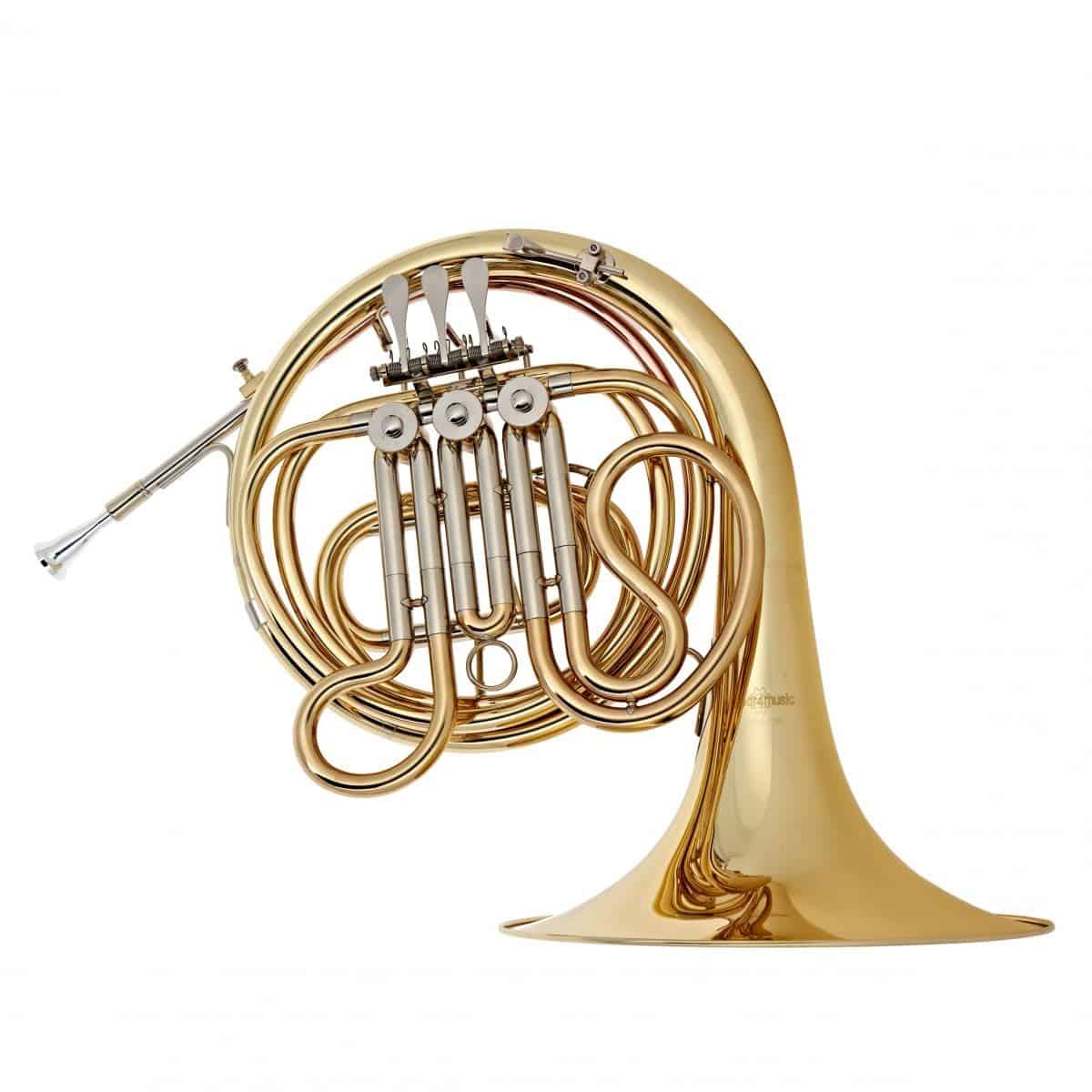
FEATURES: Light Gold Lacquered Finish
OTHER INFO: comes with a Carry Case and Mouthpiece
- French Horn with 3 keys in F
- Bell Diameter: 11"
- None
When you click ‘Check Price’, you’ll see there are loads of great places to buy this item. Our personal favorite is Sweetwater for the US, and Thomann and Gear4Music for the UK & Europe.
They are the largest music retailers, with excellent customer service, competitive prices, really fast shipping, and the longest guarantees.
The professional musician who wrote this article combined many things,
from the product build, manufacturer’s reputation through to feedback
from other users, to create our famous TedScore™.
Buying a French Horn: Double Horn
What is a double French Horn?
A double French Horn is a horn that combines an F horn and a Bb horn. The F horn is the “original” valved French Horn, which produces a traditional, veiled horn tone, and the Bb allows easier high playing. There is a thumb valve to switch between them – a player will always read music in F, and just think of the different sides as providing different fingering options.
Double horns come in two types – compensating and full double.
A full double French Horn has separate tubing for both the F and Bb sides, whereas a compensator uses the Bb slides for every note plus small F slides that add the required length to bring the pitch down. Compensators have less secure tuning, but they are lighter and cheaper to produce.
It is possible for compensating horns to be high quality, but for some reason comparatively few high-quality compensators are made; most are student level.
As a starting instrument, you can’t get a better cost/quality package than the Coppergate Double French Horn shown below…
Coppergate Double Horn

FEATURES: Gold Brass Body For Warm Tone
OTHER INFO: comes with a Hard Foam Case and Mouthpiece
- Body Finish: Clear Lacquer
- Valves: 4 x Monel Rotary
- None
When you click ‘Check Price’, you’ll see there are loads of great places to buy this item. Our personal favorite is Sweetwater for the US, and Thomann and Gear4Music for the UK & Europe.
They are the largest music retailers, with excellent customer service, competitive prices, really fast shipping, and the longest guarantees.
The professional musician who wrote this article combined many things,
from the product build, manufacturer’s reputation through to feedback
from other users, to create our famous TedScore™.
Best French Horn Brands
There are two big horn makers worldwide – Paxman and Alexander. The majority of horns played are by one of these two. Quality horns are also made by Dürk, Hoyer, Schmid (especially triples), Conn (mostly for US markets).
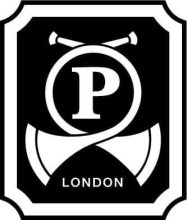

Here are 10 horns we think are worth knowing about – a mix of professional, beginner and intermediate instruments to suit every player.
Our Top 10 Best French Horn Reviews
Alexander 103
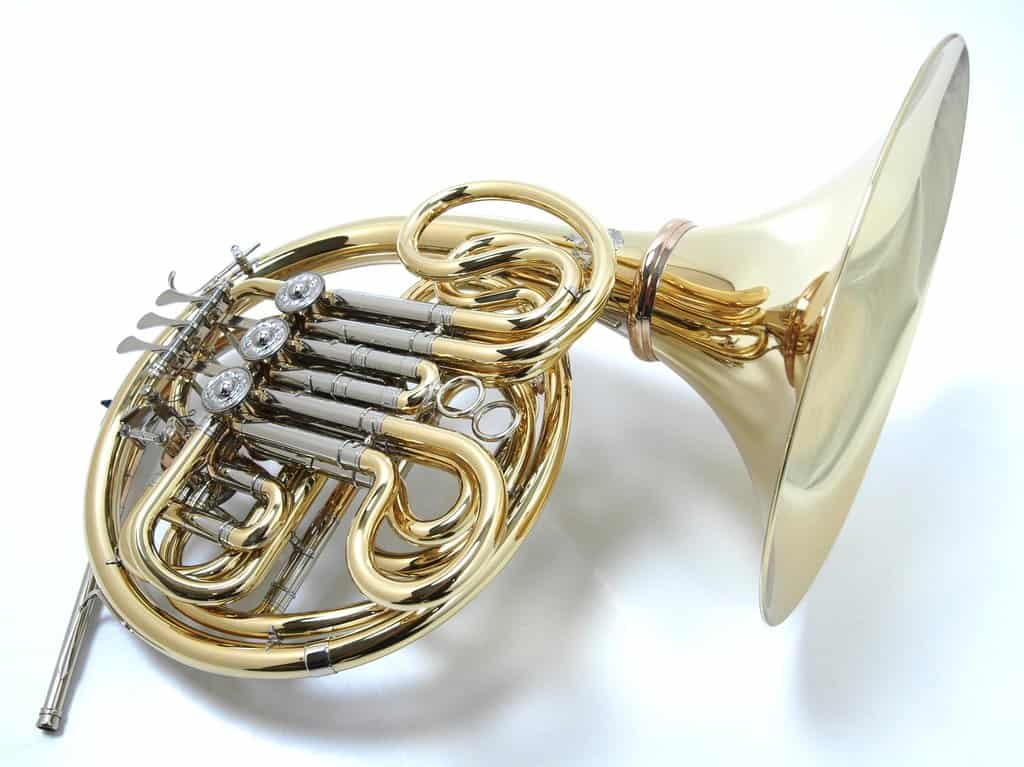
FEATURES: One of the top choices worldwide, with a beautiful carrying sound
OTHER INFO: comes with a Hard Foam Case and Mouthpiece
- Standard instrument in Europe/UK - easy to match other players with the same instrument
- Beautiful sound that carries and projects
- Brassiness is easy!
- Lots of options (gold/yellow brass, lacquer, detachable bell etc)
- Professional-level instrument
- Widely stocked
- Many 2nd-hand options
- Double horn
- Expensive, price depends on euro exchange rate
- Less common in US professional orchestras
- Slightly harder to play
- Renownedly inconsistent - check them thoroughly before you buy
When you click ‘Check Price’, you’ll see there are loads of great places to buy this item. Our personal favorite is Sweetwater for the US, and Thomann and Gear4Music for the UK & Europe.
They are the largest music retailers, with excellent customer service, competitive prices, really fast shipping, and the longest guarantees.
The professional musician who wrote this article combined many things,
from the product build, manufacturer’s reputation through to feedback
from other users, to create our famous TedScore™.
The Alexander 103 is the standard horn in Germany, and in many UK orchestras. They are renowned for being a little more challenging to play (due to the resistance of a slightly narrower bore and smaller bell throat), but they make a clear, carrying, beautiful sound, and an exciting brassy sound in loud playing. There are lots of custom options – the metal, lacquer, detachable bell etc.
The only thing to watch out for is that Alexanders are renowned for being inconsistent (they’re hand-made). This produces some of the world’s finest instruments, but also produces a few that have slightly awkward tuning or a hint of stuffiness. Always compare several 103s, get somebody else’s opinion and test them thoroughly – it’s worth it to find an absolute gem of an instrument (I did!).
Paxman 20
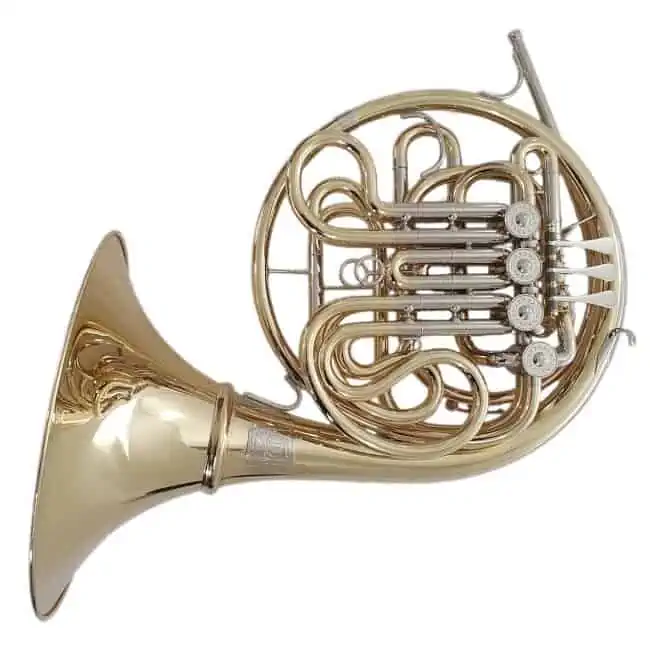
COMES WITH: Full Double
FEATURES: Another world-class horn, big-sounding and reliable
Paxman 20
- Standard instrument in Europe/UK - easy to match other players with the same instrument
- Beautiful sound that carries and projects
- Brassiness is easy!
- Lots of options (gold/yellow brass, lacquer, detachable bell etc)
- Professional-level instrument
- Widely stocked
- Many 2nd-hand options
- Double horn
- Less common in Germany
- Harder to get brassy if that’s what you want
- Slightly harder to play
- The Alexander 103, its main competitor, may offer slightly more clarity and sound definition at the back of the hall
When you click ‘Check Price’, you’ll see there are loads of great places to buy this item. Our personal favorite is Sweetwater for the US, and Thomann and Gear4Music for the UK & Europe.
They are the largest music retailers, with excellent customer service, competitive prices, really fast shipping, and the longest guarantees.
The professional musician who wrote this article combined many things,
from the product build, manufacturer’s reputation through to feedback
from other users, to create our famous TedScore™.
The Paxman 20 is a standard double horn, free-blowing and played by many British horn players and in some European and US orchestras.
They make a big sound, slow to become brassy, and are designed to make the high register slightly sharper and the low register flatter, correcting common problems in these registers (handy!).
The number of symphony orchestras that play on Paxmans is testament to the fact they project well, although for my ears, Alexander horns have greater definition and clarity of sound in dense orchestral pieces (a matter of taste – I know some die-hard Paxmanites think Alexanders sound nasal!).
They have a slightly larger bore than Alexanders, which makes them more free-blowing. And they’re a very consistent make, so every Paxman 20 is high-quality.
Alexander 1103
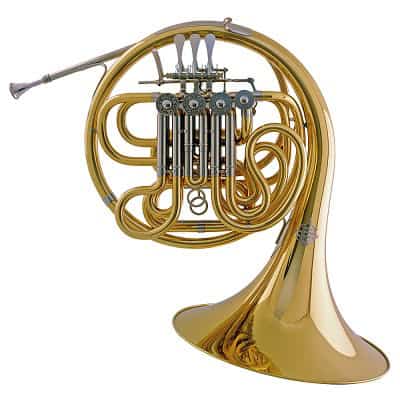
FEATURES: Halfway between the Alex 103 and the Paxman 20, a free-blowing high-quality professional instrument.
OTHER INFO: Full Double
- Standard instrument in Europe/UK - blends with Alexanders & Paxmans
- Beautiful sound that carries and projects but freer blowing than the 103
- Good compromise between an Alex 103 and a Paxman
- Lots of options (different metals, lacquer, detachable bell etc)
- Professional-level instrument
- More expensive than the 103; also priced in €, so exchange rate dependent
- Less common in US professional orchestras
- Renownedly inconsistent - check them really thoroughly before you buy
- Not stocked everywhere
- 2nd-hand 1103s are rare
When you click ‘Check Price’, you’ll see there are loads of great places to buy this item. Our personal favorite is Sweetwater for the US, and Thomann and Gear4Music for the UK & Europe.
They are the largest music retailers, with excellent customer service, competitive prices, really fast shipping, and the longest guarantees.
The professional musician who wrote this article combined many things,
from the product build, manufacturer’s reputation through to feedback
from other users, to create our famous TedScore™.
The 1103 is like a cross between an Alex 103 and a Paxman 20. It has the lovely sound clarity of a 103 but is slightly freer-blowing (like a Paxman) as a slightly wider-bored horn. They are even more expensive than the 103, but are amazing instruments.
Jupiter 852L
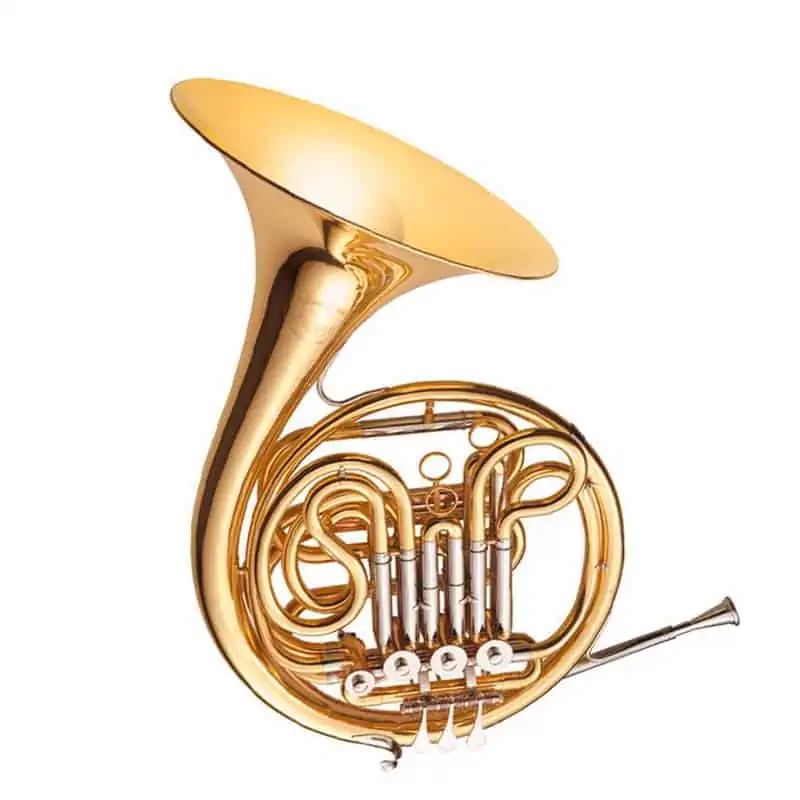
COMES WITH: Full Double
FEATURES: The best-value intermediate instrument money can buy - a rare but special find.
Jupiter 852L
- In tune
- Sturdy
- Double horn
- Bargain price for an intermediate instrument, great value
- Hard to find
- Good sound, but not as much depth as a professional instrument
When you click ‘Check Price’, you’ll see there are loads of great places to buy this item. Our personal favorite is Sweetwater for the US, and Thomann and Gear4Music for the UK & Europe.
They are the largest music retailers, with excellent customer service, competitive prices, really fast shipping, and the longest guarantees.
The professional musician who wrote this article combined many things,
from the product build, manufacturer’s reputation through to feedback
from other users, to create our famous TedScore™.
The Jupiter 852L is a bargain intermediate instrument. Sturdily built (I dropped one off a chair as a teenager), they’re fairly well in tune and make a good sound. The only problem is Jupiter no longer seem to sell them – but some retailers still have them, and second-hand options are available.
Paxman Academy
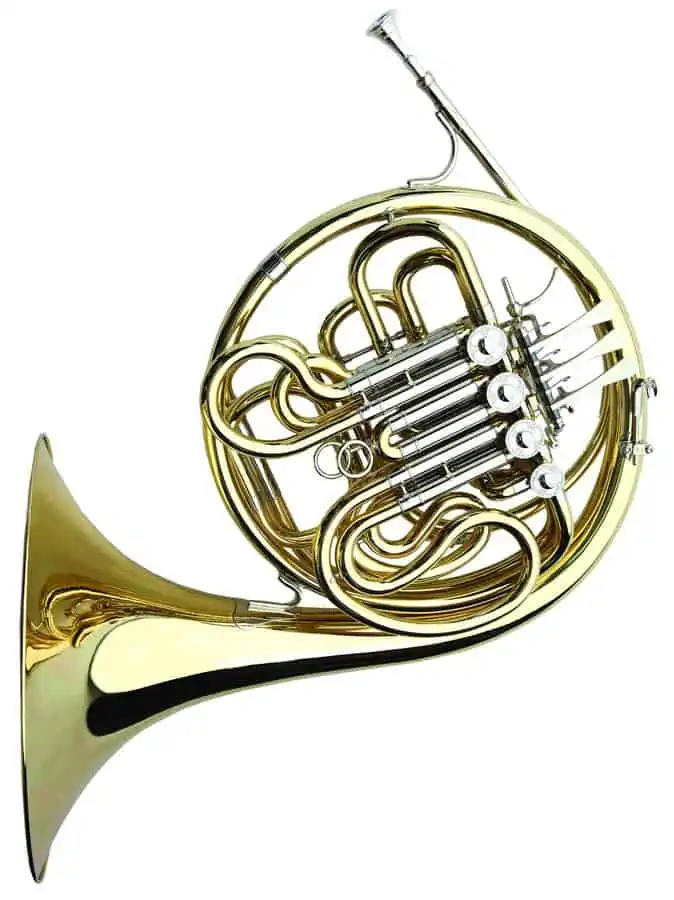
FEATURES: A fantastic student instrument that can take the player far.
OTHER INFO: Full Double
- In tune
- Good tone
- Quality instrument, reputable company
- Excellent value
- Cheaper than a professional instrument and very good quality
- Rental options
- Still not a professional instrument
- Sturdy, but not totally indestructible
When you click ‘Check Price’, you’ll see there are loads of great places to buy this item. Our personal favorite is Sweetwater for the US, and Thomann and Gear4Music for the UK & Europe.
They are the largest music retailers, with excellent customer service, competitive prices, really fast shipping, and the longest guarantees.
The professional musician who wrote this article combined many things,
from the product build, manufacturer’s reputation through to feedback
from other users, to create our famous TedScore™.
The Paxman Academy series full double is an intermediate instrument that can last young players right up until 18, and beyond if they’re not going to go into the profession (it’s also a great buy for adult learners who can’t afford an expensive professional French Horn but still want something good-quality). It’s well in tune with a good tone, and Paxman also rent them out.
John Packer JP161/JP162
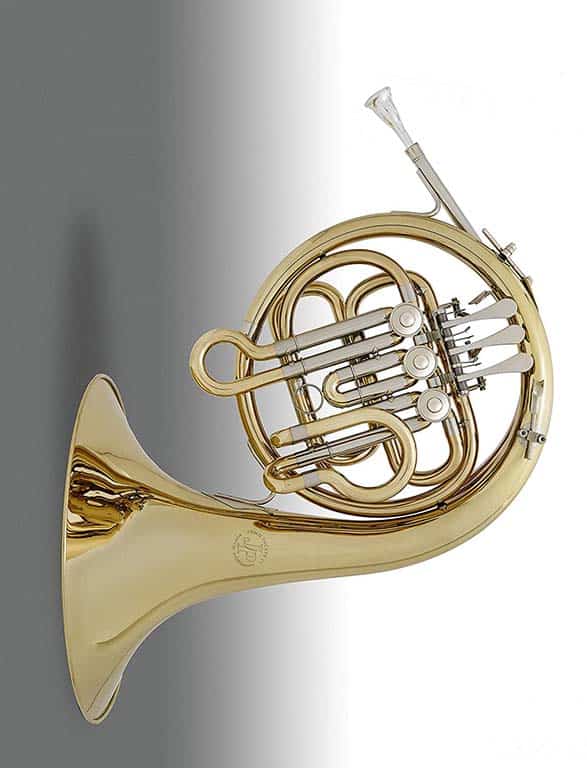
FEATURES: A fantastic student instrument that can take the player far.
OTHER INFO: Full Double
- Work well
- Very light
- Sturdy
- Child-sized
- Bargain
- Single horn
- Not suitable for adults
- Strictly for beginners
When you click ‘Check Price’, you’ll see there are loads of great places to buy this item. Our personal favorite is Sweetwater for the US, and Thomann and Gear4Music for the UK & Europe.
They are the largest music retailers, with excellent customer service, competitive prices, really fast shipping, and the longest guarantees.
The professional musician who wrote this article combined many things,
from the product build, manufacturer’s reputation through to feedback
from other users, to create our famous TedScore™.
John Packer make bargain beginner student level instruments – singles in F and Bb. They work well and they’re very light, sturdy and suitably small for young hands – and the cheapest good beginner French Horns money can buy. For more beginner options, check out our beginner horn buying guide.
Schmid F/Bb/Eb alto triple
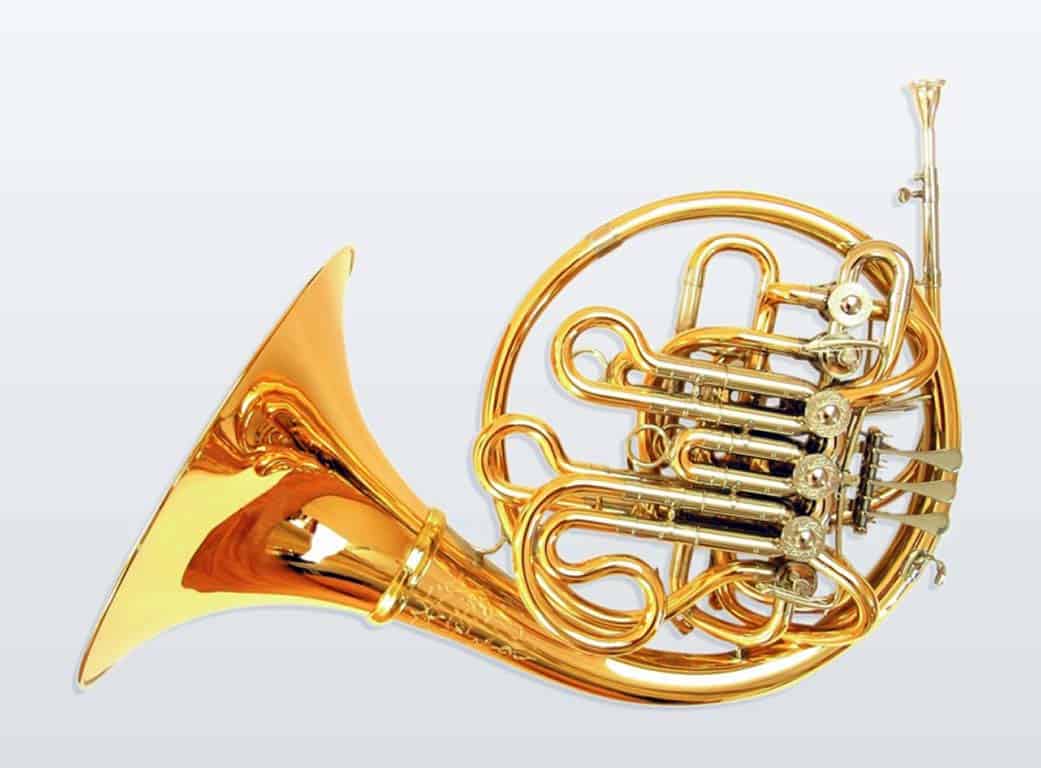
FEATURES: A horn that can do everything - albeit with a hefty price tag
OTHER INFO: Triple
- Can do everything! Very high, very low
- Light triple option
- Blends with Alexanders
- Expensive, fluctuating € exchange rate
- Heavy
- You can technically do almost everything on a normal full double anyway
When you click ‘Check Price’, you’ll see there are loads of great places to buy this item. Our personal favorite is Sweetwater for the US, and Thomann and Gear4Music for the UK & Europe.
They are the largest music retailers, with excellent customer service, competitive prices, really fast shipping, and the longest guarantees.
The professional musician who wrote this article combined many things,
from the product build, manufacturer’s reputation through to feedback
from other users, to create our famous TedScore™.
The idea behind a triple horn is it does everything, from very low to very high. They are a common choice for professional principal horn players, as the Eb/F alto bit moves high notes slightly further apart, making them easier to hit.
Triples by the horn maker Schmid are the most popular type – the Eb alto horn is slightly mellower than the F alto in most triples, and the horn blends well with players on Alexander horns. They’re also lighter than other triples. However, they are expensive (and priced in €), and still somewhat heavy.
A great all-rounder if you can cope with the price and the weight!
Yamaha 671
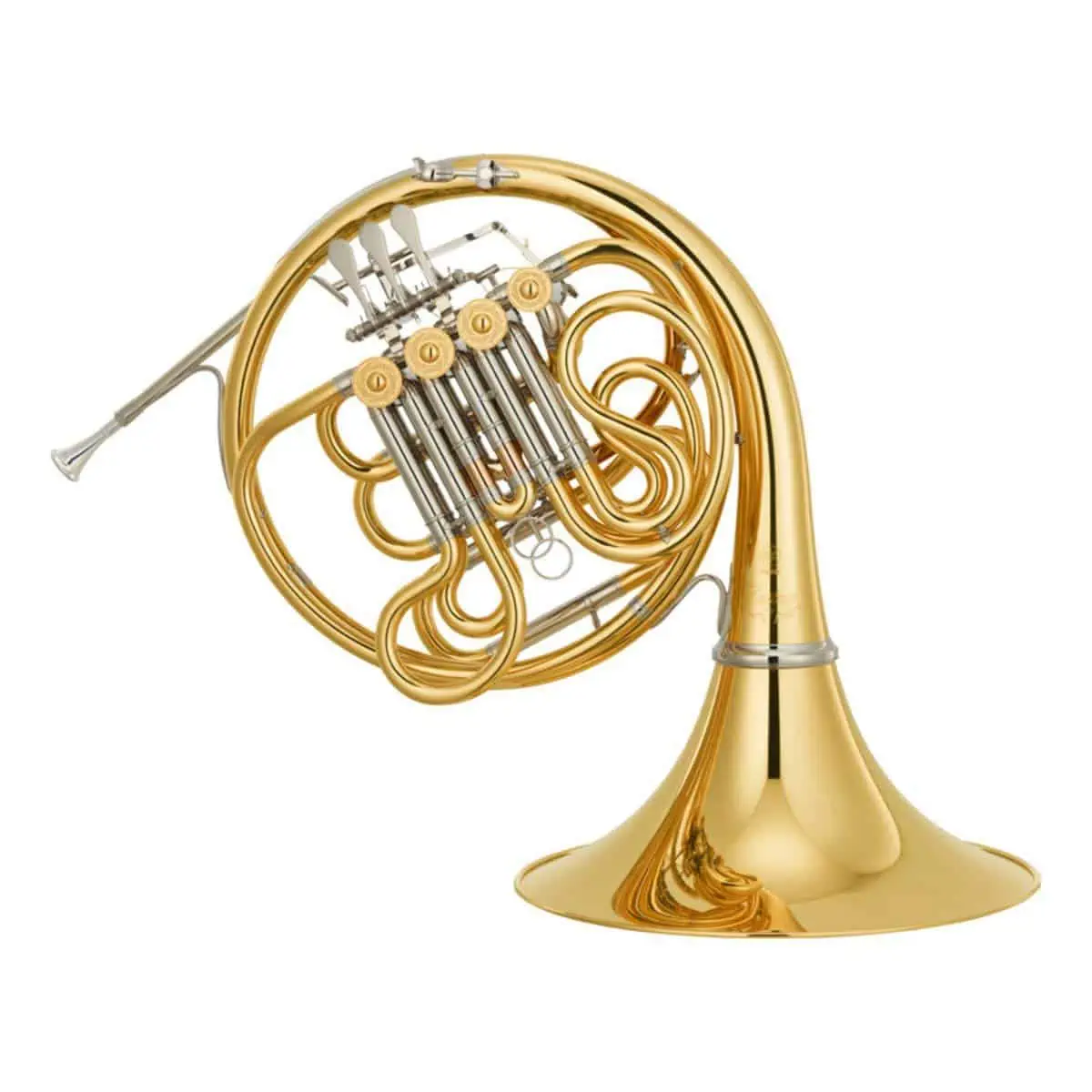
FEATURES: A great horn for a talented student, with a surprisingly good high register
OTHER INFO: Double
- Cheaper than a professional horn - appropriate for good amateur players and students
- Well-made, good all-round horn
- Clear high range
- Yamahas are less common in orchestras - harder to match other players
- Expensive compared to other intermediate options
- Sharp hand-stopping
When you click ‘Check Price’, you’ll see there are loads of great places to buy this item. Our personal favorite is Sweetwater for the US, and Thomann and Gear4Music for the UK & Europe.
They are the largest music retailers, with excellent customer service, competitive prices, really fast shipping, and the longest guarantees.
The professional musician who wrote this article combined many things,
from the product build, manufacturer’s reputation through to feedback
from other users, to create our famous TedScore™.
One highly-respected London ex-principal horn says this is the horn he “gets all his good students to get”! It works well in all registers, is well-built (though still quite dentable!) and has a lovely clear sound in the high range. It’s more expensive than the Paxman Academy series and I think it hand-stops a little sharp, but that may have been a one-off. (Check it yourself!)
A great mid-range choice.
Holton 178/179/180
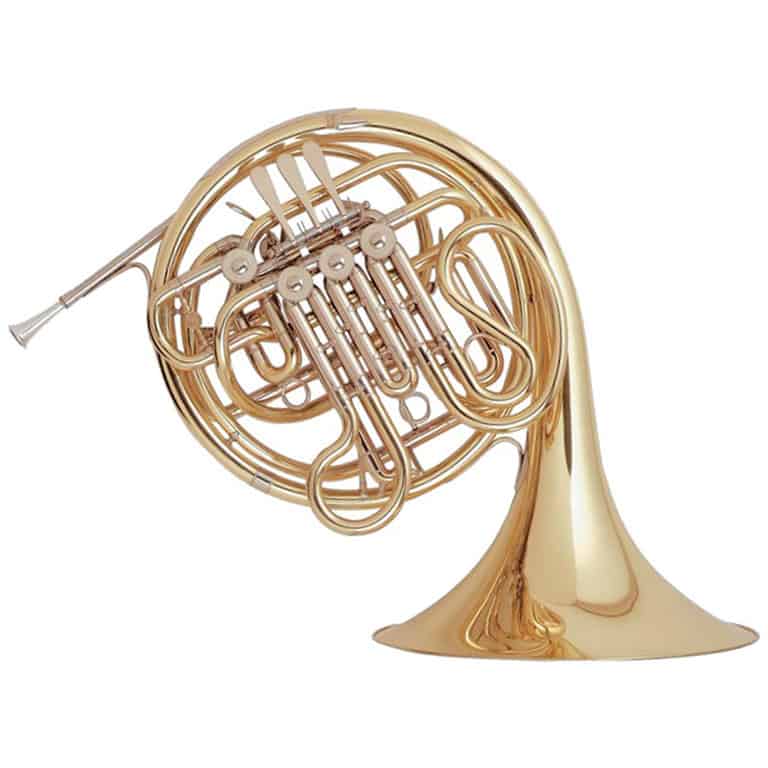
FEATURES: A good-quality, sturdy instrument with an extra-big sound
OTHER INFO: Full Double
- Professional instrument, but appropriate for good students too
- Well-made and sturdy
- Huge sound if you want it
- Holtons are less common in orchestras - harder to match other players
- Paxmans and Alexanders possibly preferable
- Huge sound less common in Europe
When you click ‘Check Price’, you’ll see there are loads of great places to buy this item. Our personal favorite is Sweetwater for the US, and Thomann and Gear4Music for the UK & Europe.
They are the largest music retailers, with excellent customer service, competitive prices, really fast shipping, and the longest guarantees.
The professional musician who wrote this article combined many things,
from the product build, manufacturer’s reputation through to feedback
from other users, to create our famous TedScore™.
The Holton H178/179/180 is a large-bore horn, and one of the few French Horns listed here to come in nickel silver. They are informally described as being “built like tanks” (in a good way!), and are very durable! A few professionals play Holtons, though they are more common among students and I think that they are surpassed by Paxmans and Alexanders (but if it works for you, why not?)
The large bore gives them a huge, fat and dark sound – more stylistically appropriate in the US than Europe, but not unheard of over here!
Conn 8D
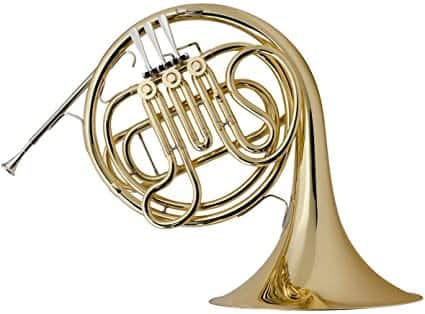
FEATURES: An American classic for a huge, powerful low sound
OTHER INFO: Full Double
- Professional instrument, but appropriate for good students too
- Well-made and sturdy
- Huge sound if you want it
- Holtons are less common in orchestras - harder to match other players
- Paxmans and Alexanders possibly preferable
- Huge sound less common in Europe
When you click ‘Check Price’, you’ll see there are loads of great places to buy this item. Our personal favorite is Sweetwater for the US, and Thomann and Gear4Music for the UK & Europe.
They are the largest music retailers, with excellent customer service, competitive prices, really fast shipping, and the longest guarantees.
The professional musician who wrote this article combined many things,
from the product build, manufacturer’s reputation through to feedback
from other users, to create our famous TedScore™.
Conn is a US household name and the 8D is a classic. It comes in nickel silver as standard for a dark sound. It is mostly found in US orchestras, though low horn players in the UK have been known to bring out a Conn 8D for a serious, late-romantic tone poem or two – the sound is so fat and smooth! Definitely not a day-to-day instrument outside America though.
We wanted to include some makes appropriate for the US market here, and in many ways the Conn 8D is exactly that. Enjoy the sound of the world’s fattest low notes!
French Horn Brands
Summary
Is there such a thing as the “best French Horn”?
Really, it’s all about horses for courses. We’ve listed some spectacular professional horns, some great beginner horns and a couple of brilliant intermediate instruments, from various French Horn brands. We can tell you that the Alexander 103 and Paxman 20 are the best instruments, but should you buy one for a clumsy teenager or a 7-year-old? Probably not.
That said, we do have some winners.

Best Overall French Horn:
Alexander 103/Paxman 20
Whether you prefer the Alexander 103 or the Paxman 20 is a matter of taste, but both instruments are amazingly well-made and everything a serious musician could wish for.

Best Beginner French Horn:
Jupiter 852L/John Packer
While the John Packer should be seriously considered for children and is a bargain, I would recommend the Jupiter 852L if you can get hold of one. It’s a full double at an unbelievable price.

Best Intermediate French Horn:
Paxman Academy
The Paxman Academy is a high-quality precursor to their professional-level instruments at a reasonable price – it’s rare to see such quality in a student-level instrument.
Has this helped you? Have we missed out a beautiful instrument? Let us know in the comments below.
Happy horn hunting!
FAQ's
At least £1000 (basic beginner instruments are less). A professional instrument might cost £7000+ new, and a decent second-hand one at least £4000. However, there are options for all budgets above.
That’s a horrible question! It’s subjective, of course. I guess you want to know what they play as well…
Here’s a selection.
Stefan Dohr, principal of the Berlin Philharmonic, plays amazingly and plays an Alexander 103.
Radovan Vlatkovic is one of the most meltingly musical soloists, and plays a Paxman 20M.
Katy Woolley, principal of the Concertgebouw, Amsterdam, is a phenomenal, creative horn player with an enormous, warm sound all over the range; she plays an unlacquered Alexander 103.
Alec Frank-Gemmill, former BBC New Generation Artist, has alternated between several different instruments including an Alexander 103, a Paxman and a Schmidt triple (he sounds lovely on all of them).
And Dennis Brain, soloist and Philharmonia principal (who died in a tragic car accident in 1957 but is possibly the most influential French Horn player of all time) ended up on an Alexander 90, a single Bb horn.
The French Horn was originally a natural horn (i.e. no rotary valves), and the player inserted different crooks to play in different keys. Lower keys had a lot of resistance (“crunch” in the sound) and high keys could be out of tune. So F and Eb became the two main keys, and eventually just F.
Anywhere from £300ish to £12000+. It depends on the quality and the cost of any custom options, plus the exchange rate at the time.
Yamaha Light is pricey but my personal favorite. Hetman is great too; always go lighter than you think you need, it can be a little thick. And for students and busy amateurs who might leave the horn untouched for a while occasionally (!),
Denis Wick does one with PTFE in https://www.gear4music.com/Woodwind-Brass-Strings/Denis-Wick-Advanced-Formula-Valve-Oil/2MTQ – which leaves a small amount of lubricant behind even when it evaporates, making things less likely to ever get truly stuck.
To learn how to use them, look here. https://www.paxman.co.uk/care-and-maintenance
A horn that combines the Bb and the F horn into one. Scroll up bookmark link to the appropriate heading for an explanation.











Great rundown on the valve options and metal choices for French Horns. It’s fascinating to see how material choices directly impact the sound and playability. What wasn’t mentioned, though, is how different metal compositions can affect a player’s tone over time, or how they respond to temperature changes – something crucial for performance contexts. Has anyone experimented with this? I’d love to hear some experiences.
You’re right on the money, TechTrombonist93. The material composition does significantly affect performance characteristics, especially in extreme climates. For instance, nickel-silver alloys tend to offer a brighter tone and are more resistant to corrosion, which might not always be desirable depending on the music genre. Likewise, warmer materials like rose brass give a rich, deep tone but need more care. It’s all about the sound preference and maintenance commitment.
Really excited to start my journey into playing the French Horn, something I’ve been putting off for way too long! I was particularly intrigued by the section discussing single vs. double horns – a concept I’m still trying to wrap my head around. Could someone perhaps explain a bit further the practical differences for a newbie? Like, is it worth jumping straight to a double horn for the added range or is it better to master a single horn first? Also, how does this choice affect learning the basics? Thanks a lot for any advice!
Amazing compilation, very useful indeed! If you could also add your take on Joseph Lidl Brno / Cerveny horn, that would be really really great. Many thanks in advance!
Thanks Bruno. We will of course add that. Thanks for the suggestion!
I am retired horn player having gone to Juiliard back in the 60’s. To get thru school in New York City I played two years playing for two Broadway Musicals.. I went to the the Ntional Symphony Orchestra in 1963 then back to New York to play with Philharmonic for their Summer season. After that I played with the San Francisco Symphony till 2004. Now to get the point: I have an excellent Hoyer horn which want sell. Can you help?
Hi Ralph. Great to hear from a pro musician, and what a wonderful career it sounds like you’ve had. Sadly we can’t help sell your horn, but good luck with the process!
I blog often and I truly appreciate your content. Your article has really peaked my interest.
I am going to take a note of your site and keep checking for new information about once per week.
I subscribed to your RSS feed too.